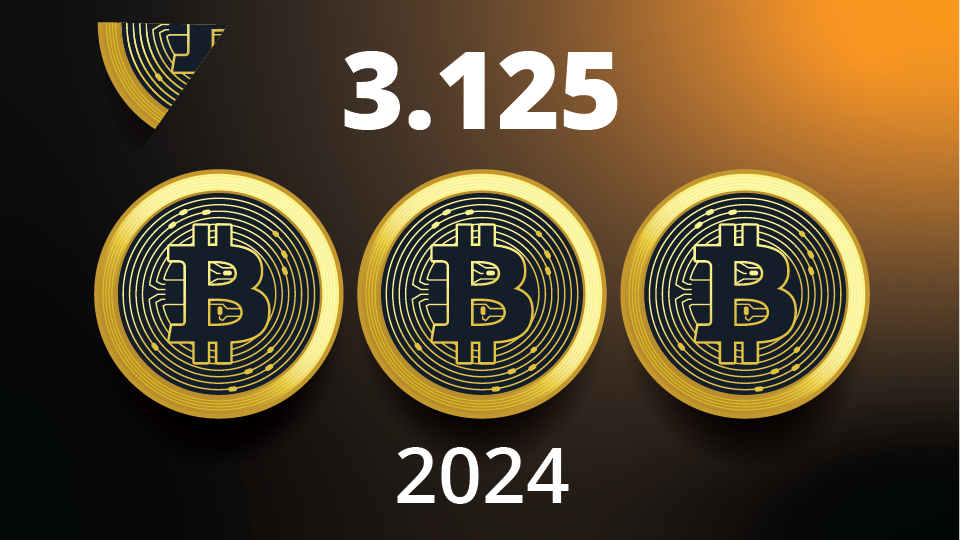Ethereum Shows Potential for Significant Growth
July 15, 2021
Watch Time 6:21 MIN
Jenna Dagenhart: Bitcoin's share of total cryptocurrency market cap has been falling and fluctuating. Joining us now to talk about another digital asset that VanEck thinks could climb to a valuation of 10 times higher than its current one is Matthew Sigel, Head of Digital Assets Research at VanEck. Matthew, Ethereum is kind a mystery to a lot of people. What is it and why should we pay attention to it?
Matthew Sigel: Thanks Jenna. Well, think of Ethereum as kind of a Linux for money, an open-source software platform on top of which anyone can program instructions into money very cheaply. So that's a very compelling use case. If Ethereum were a software company, it would be the fifth largest in the world after Microsoft, Oracle, SAP and Salesforce. So there are already tens of thousands of developers who are building decentralized applications to send and receive money, and the Ethereum stakeholders are benefiting from this to the tune of, we estimate, $18 billion this year in revenues that Ethereum ecosystem participants will earn for providing their computing power to this global open-sourced project.
Matthew Sigel: So, in our view, this is a deflationary platform that threatens existing profits of both traditional Wall Street intermediaries and Web 2.0 platforms whose market share has been so focused on by regulators and policymakers. So Ethereum, think of it as a software company without any employees, making $18 billion this year.
Jenna Dagenhart: Wow, and you think Ethereum has the potential to go up 10x from where it is right now. What would need to happen to make that bull case a reality?
Matthew Sigel: Yeah, a 10x increase sounds so fantastical, but when you're starting from such a small market share, we don't think it's such an implausible scenario. For context, we estimate that Ethereum currently has about a half a percent market share of the total addressable disruption that it may cause. So that math is based on $3 trillion worth of banking and payments revenues that are still done quite inefficiently and expensively. So this is not even the total market, this is just the proportion that Ethereum currently addresses. And so if they could just increase their market share from that less than one half a percent to five percent, given the winner take all characteristics that we've seen in many network-based businesses in the last decade., And then apply the same multiple that Ethereum trades on now, you can value block chains and cryptocurrencies in much the same way that we value software companies, and apply a multiple to their revenues or to their earnings. In the case of Ethereum, since there are no headquarters or employees to speak of, it's basically pure profit. So we would apply 20 times to that 5% market share potential and that would be a 10x from current level. So it sounds like a lot but 5% market share is still pretty small and leaves plenty of room for banks and traditional internet companies as well.
Jenna Dagenhart: Mm-hmm. It sounds like there's a lot of potential here. What are some of the catalysts as well as some of the risks that we need to be aware of going forward?
Matthew Sigel: So we saw in the first half of this year, when the Ethereum price rose so dramatically, is that the costs of doing business on the network, so the transaction fees, also rose very quickly and that deterred a lot of entrepreneurs and businesses from performing transactions on the network. The bull case for this protocol is that it's a deflationary disruption to existing intermediaries like Web 2.0 companies that charge 15-50% take rates of the entrepreneurs who build businesses on their platforms. And theoretically Ethereum should be able to provide that service at a much lower fee, maybe 50 basis points. What we saw this spring is that the network became so congested, it's a good problem to have, lots of people wanted to launch projects. Fees got expensive and that deterred some activity. So Ethereum is in the process of revamping its network, a new product update so to speak, that should alleviate some of those bandwidth constraints and make it more economically attractive for businesses to transact. But there is risk around that transition, there is a lot of competition with products that claim to be cheaper, faster, better, and that speaks to just the general pace of innovation in this space. So, competition and execution are the things to watch.
Jenna Dagenhart: Well Matthew, great to have you. Thanks for joining us.
Matthew Sigel: Thank you.
Jenna Dagenhart: And thank you for watching. Once again, that was Matthew Sigel, Head of Digital Assets Research at VanEck, and to receive regular experts from VanEck's experts, please visit vaneck.com/subscribe. I'm Jenna Dagenhart with Asset TV.
IMPORTANT DISCLOSURE
The views and opinions expressed are those of the speaker and are current as of the video’s posting date. Video commentaries are general in nature and should not be construed as investment advice. Certain statements contained herein may constitute projections, forecasts and other forward looking statements, which do not reflect actual results, are valid as of the date of this communication and subject to change without notice. Information provided by third party sources are believed to be reliable and have not been independently verified for accuracy or completeness and cannot be guaranteed. VanEck does not guarantee the accuracy of 3rd party data. Any discussion of specific securities mentioned in the video is neither an offer to sell nor a recommendation to buy these securities.
The information herein represents the opinion of the author(s), an employee of the advisor, but not necessarily those of VanEck. The cryptocurrencies discussed in this material may not be appropriate for all investors. The appropriateness of a particular investment or strategy will depend on an investor’s individual circumstances and objectives.
This material has been prepared for informational purposes only and is not an offer to buy or sell or a solicitation of any offer to buy or sell any cryptocurrencies, or to participate in any trading strategy.
Certain statements contained herein may constitute projections, forecasts and other forward looking statements, which do not reflect actual results, are valid as of the date of this communication and subject to change without notice. Information provided by third party sources are believed to be reliable and have not been independently verified for accuracy or completeness and cannot be guaranteed. VanEck does not guarantee the accuracy of third party data.
Cryptocurrency is a digital representation of value that functions as a medium of exchange, a unit of account, or a store of value, but it does not have legal tender status. Cryptocurrencies are sometimes exchanged for U.S. dollars or other currencies around the world, but they are not generally backed or supported by any government or central bank. Their value is completely derived by market forces of supply and demand, and they are more volatile than traditional currencies. The value of cryptocurrency may be derived from the continued willingness of market participants to exchange fiat currency for cryptocurrency, which may result in the potential for permanent and total loss of value of a particular cryptocurrency should the market for that cryptocurrency disappear. Cryptocurrencies are not covered by either FDIC or SIPC insurance.
Investing in cryptocurrencies comes with a number of risks, including volatile market price swings or flash crashes, market manipulation, and cybersecurity risks. In addition, cryptocurrency markets and exchanges are not regulated with the same controls or customer protections available in equity, option, futures, or foreign exchange investing. There is no assurance that a person who accepts a cryptocurrency as payment today will continue to do so in the future.
The features, functions, characteristics, operation, use and other properties of the specific cryptocurrency may be complex, technical, or difficult to understand or evaluate. The cryptocurrency may be vulnerable to attacks on the security, integrity or operation, including attacks using computing power sufficient to overwhelm the normal operation of the cryptocurrency’s blockchain or other underlying technology. Some cryptocurrency transactions will be deemed to be made when recorded on a public ledger, which is not necessarily the date or time that a transaction may have been initiated.
- Investors must have the financial ability, sophistication and willingness to bear the risks of an investment and a potential total loss of their entire investment in cryptocurrency.
- An investment in cryptocurrency is not suitable or desirable for all investors.
- Cryptocurrency has limited operating history or performance.
- Fees and expenses associated with a cryptocurrency investment may be substantial.
There may be risks posed by the lack of regulation for cryptocurrencies and any future regulatory developments could affect the viability and expansion of the use of cryptocurrencies. Investors should conduct extensive research before investing in cryptocurrencies. Past performance is not a guarantee of future results.
Information provided by Van Eck is not intended to be, nor should it be construed as financial, tax or legal advice. It is not a recommendation to buy or sell an interest in cryptocurrencies.
No part of this material may be reproduced in any form, or referred to in any other publication, without express written permission of Van Eck Associates Corporation. © Van Eck Associates Corporation.
Van Eck Associates Corporation
666 Third Avenue, New York, NY 10017




